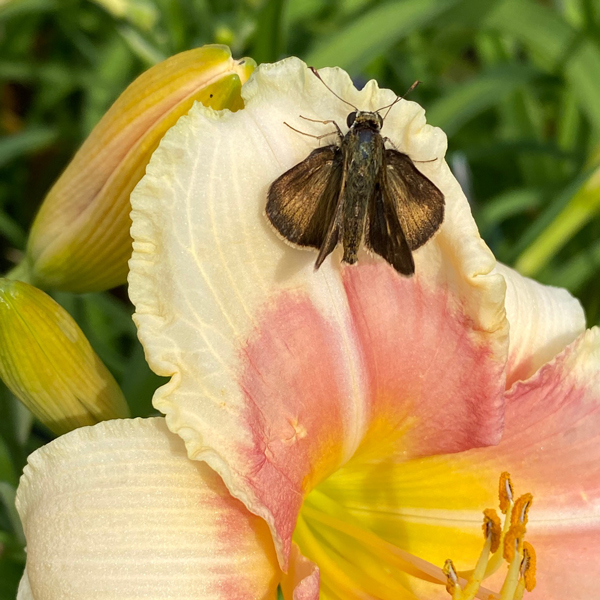
Looking out your window these past few hot July days, you may have noticed an abundance of moths fluttering in the air. These are male adult gypsy moths, who busily munching away the foliage on all of our trees and causing caterpillar mayhem only a week or so ago. Now they’ve already pupated and are on the wing, hunting for females to mate with.
Adult moths don’t eat, so your plants are safe from them for now. The female gypsy moths are flightless, and will soon be emerging near the bases of your trees, getting ready to crawl upwards and lay their eggs. The egg sacs look like woolly beige masses, usually about an inch in length, and can be found in a variety of semi-sheltered places where they overwinter before hatching. Check tree trunks, rock piles, shingles, patio furniture, fences, and firewood stacks. Unlike Winter Moth eggs, which are usually concealed in hidden crevices, Gypsy Moth eggs are fairly obvious….. which makes them easier to find and destroy!
Attempting to spray or kill the adult male moths is an exercise in futility; you’ll never nail them midair and there are just too many. You’ll also risk endangering many beneficial insects if you start spraying pesticides everywhere. Hold off on traps, since they really only attract more moths to your yard, and who needs that? Instead, we shall strategize: the idea here is to go after the ladies and their egg sacs, and make a big dent in their population before the next generation hatches out in April and starts the terrible cycle again.
First, identify the locations where female moths will likely congregate, usually near the bases of affected trees. You can judiciously apply a contact insecticide in those areas, or pick off all the females one by one and drop them in a bucket of soapy water. Then keep an eye out for egg sacs over the next 6 months, and when you find them, saturate the area with horticultural oil and/or scrape them off the bark and destroy them. Think about all the trees they have harmed this summer – this is your revenge!
The best defense against Gypsy Moth is to proactively maintain good growing conditions and a well-rounded ecosystem that provides food and shelter for their natural predators, including birds and small animals. Most importantly, pay extra care and attention to any trees or plants that have been damaged by Gypsy Moths. A defoliated tree is not a dead tree, and there is still hope if you act now. Give damaged trees extra water and a dose of fertilizer, and prune judiciously to encourage fresh growth.
If you have any questions or need assistance, our Garden Center staff can direct you with advice or recommendations from our wide selection of problem-solver products. Just ask!









